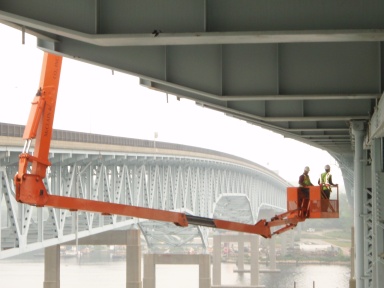Seasonal snowstorms don’t just take a toll on drivers traveling slick roads, they wear on bridges, where years of water and road salt corrode the steel girders that support the weight of the structure and cars.
But traditional methods for repairing corrosion-damaged steel bridges are so costly, complex and time-consuming that necessary repairs are often delayed, said Arash Zaghi, assistant professor of civil and environmental engineering at the University of Connecticut (UConn).

According to the Federal Highway Administration, it would take an annual investment of about $20.5 billion to repair and maintain all of the bridges in the country that have outlived their design life.
Zaghi and a team of UConn researchers from the School of Engineering are trying to reduce repair costs and simplify the rehabilitation process with an advanced form of concrete. “We need to promote revolutionary methods,” he said.
With funding from the Connecticut Department of Transportation, U.S. Department of Homeland Security and industry collaborators Lafarge and Infra-Metals, Zaghi is leading a study that tests the ability of ultra-high strength concrete to repair steel girders and maintain durability over time.
The concrete used was produced by Lafarge and, although the product has been around for about 20 years, its benefits are just starting to be recognized, according to Kay Wille, co-investigator on the study.
For the tests, the researchers constructed three girders modeled after those from a local bridge. One girder was undamaged, and they reduced the thickness of two other girders to simulate the weakness caused by corrosion damage.
While the damaged girder supported up to 43,000 pounds, the damaged girder repaired with the ultra-high strength concrete supported 225,000 pounds. That strength was even more than the undamaged girder, which supported a maximum of 180,000 pounds.
Researchers say the use of the advanced concrete for repairs has the potential to be done when bridge is in service. Having successfully completed the first phase of the investigation, they are beginning to test the long-term durability of the repairs.
“I became involved in the bridge project a few months after beginning the fellowship,” said Kevin Zmetra, a doctoral candidate at UConn whose participation was funded in part by DHS. “I thought the project had great potential to solve a critical issue facing our nation’s infrastructure.”



